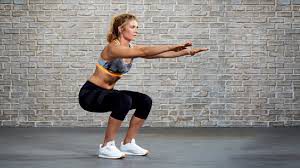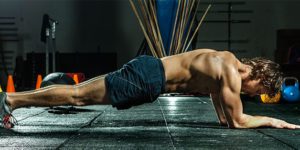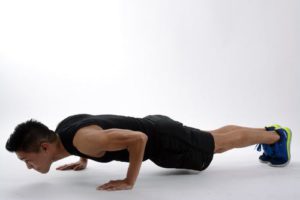TARGET AUDIENCE
This routine is for those who may have little time allocated to their workout, but who see the importance of continued exercise at home. It would also fit the needs of those who have not purchased home exercise equipment, though they may do so later. This a very simple program. It is flexible, since it may be done once, twice, 3 times or more as a circuit. It has only 4 component parts. Instead of doing circuits, one may choose to do 2 or 3 sets of each part before starting the next. Or it could be done as only one circuit and finished in about 20 minutes or less.
The movements are familiar to most: push-ups, squats, leg raises and planks. Ideal reps would be 25 for the first 3 exercises and a minute for the plank. Beginners will need to work up to that ideal and may choose to start out at 10 reps for the first 3 and a half minute for the plank.
PUSH – UPS
This is a classic exercise and one of the most productive for the upper body. It thoroughly engages the pectoral muscles of the chest and the triceps of the upper arms. Back and shoulders are also in play. It is important to squeeze your core and to keep your elbows close to your sides. Perform the exercise slowly. Inhale as you come up; exhale as you go down. Push – ups have long been considered a basic fitness test for coaches, trainers and athletes.
Here is the correct way to do a push – up:
- Get down on all fours, hands slightly wider than shoulders.
- Straighten your arms and legs
- Lower your body until your chest nearly touches the floor
- Pause, then push back up
SQUATS
Squats strengthen your legs and the tendons in your knees. Quadriceps are primarily worked, though the calves and hamstrings are also. Squats burn a lot of calories and recruit a lot of muscles. It is best to stand up straight with feet roughly shoulder width apart, eyes forward. Then “sit down”, with your knees in line with your feet. At the end, your hamstrings should be resting on your calves. Reverse the motions to rise.

LEG RAISES
Leg raises represent excellent movements for your lower abdominal muscles. They also strengthen and add flexibility to your hips and lower back. Raise your legs and keep them as straight as you can. Lift them until they point to the ceiling. Point your toes. Slowly lower your legs, but try not to let them touch the floor before you again lift them. This will maintain tension on your core. If it is uncomfortable (to your back) to maintain straight legs, bend your knees when your lift your legs. Then straighten them as the lift is completed and point them to the ceiling.

PLANKS
Planks improve core strength and stability. They are also all – encompassing strengtheners of your back, chest, shoulders, arms and neck – as well as your abdominal muscles. This is an isometric exercise for your core muscles, a means to improve your posture. Planks may begin with your arms in a push – up position or with your elbows touching the floor. I am currently doing a version where I touch my knees to the floor repeatedly during the plank. There are also side planks, walking planks, reverse planks, planks with knee to elbow, planks with feet on an exercise ball and planks with dumbbells as a rowing exercise.
I would recommend the basic plank with forearms on the floor for beginners. I have heard people boast about the length of time they were able to hold the plank position – 2 minutes, 3 minutes, 4 minutes. In my opinion, the best advice is to maintain good form – body in straight line, back not sagging, core muscles tensed – and max out at 60 seconds. Lessen the stress on your back.

CONCLUSIONS
This workout is versatile in that it could be done very quickly or it might be done in multiple sets for higher impact. “Simplify, simplify, simplify” said Henry David Thoreau, though it seems unlikely that he had workouts in mind at that moment. These movements have the virtue of simplicity, yet the potential to build an excellent foundation of strength and fitness. They also render ineffectual the common excuses for not working out – lack of time, lack of equipment, lack of money to buy equipment or gym memberships, fear of exercise complexities and the like. I really can’t understand why a minimal 20 minutes of workout time would not be availed by everyone physically capable of the movements.
Thanks for reading this. See the “Comments”box for comments or questions or contact richard@myworkoutathome.com. Be well!
